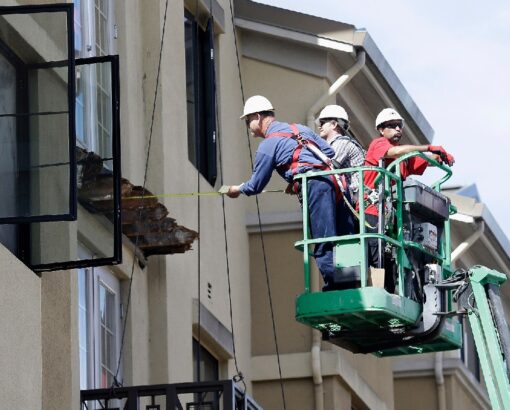
On June 24, 2021, a shot was heard around the world when there was a substantial partial collapse at the Champlain Towers South Condominium in Surfside, Florida. The horrific event at this high-rise killed 98 people and left countless others without their homes or possessions.
CAI immediately convened three task forces consisting of about 150 of the best in the industry involved with condominium and community associations as managers, developers, lenders, engineers, attorneys board members, owners and reserve study specialists. The goal is to adopt new CAI Public Policy and expand on Best Practices. Public Policy would be promoted for legislative changes on a national, state, local and county level. Best Practices would be an ideal all community associations would strive to attain.
The three task forces are 1. Building Inspections and 2. Reserve studies and funding and 3. Insurance and Risk Management. The products of this work are not yet drafted or complete but below is where it appears these public policies and best practices are heading:
1. Building Inspections-The federal government is looking to budget $22 million to explore the cause of the collapse. See Senate Resolution 300 and House Bill 4609 and the Fiscal Year 2022 Commerce, Justice, State Appropriations Act which commemorating the victims and first responders and allocating $22 million to investigate the collapse. It is very important to note that the cause of the collapse may not be known for months or years, if ever, and Public Policy and Best Practices cannot wait for that answer but must move rapidly now.
On a state and local and county level, Florida and Surfside and Miami Dade County are likely to adopt public policy first but some other cities across the country and some other states are looking for a legislative fix.
The best guess as to where Public Policy will land is that building inspections will be required sooner than the 40 years for the first inspection currently required by Florida. 10 years might be the goal with existing buildings over 10 years old inspected first within 2 years and developers perhaps being required to have an inspection performed. Whether it be the local government or the condominium association, the work will likely be changed to require a Professional Engineer and perhaps a third party P.E. retained by the local government or a third party P.E. in the event of developer control.
The types of structures may be focused on structural concrete and structural steel construction. If this were the case, note that Best Practices would likely require wood frame construction but the legislation may not. The inspections may look at structure and mechanical systems. It is unknown as to whether seismic concerns will be proposed for legislative change or whether land subsidence will be a legislative fix or best practice.
With the building inspection requirement, there would likely be some guidance as to funding for any repairs the engineer states must be done. Funding would likely be by a combination of reserves, special assessments and condominium association loans. At least 2 lenders in Massachusetts do loans as long at 25 to 30 year terms.
2. Reserve Studies and Reserve Funding
It is debatable whether a reserve study would have prevented the collapse. Reserve studies are sometimes not done by P.E.’s and if they are, the premise is that the components are all good so design flaws and deterioration such as caused by salt in the air at oceanfront properties would not be part of a reserve study. However, legislators looking for a fix will likely think reserves and reserve funding are part of the solution so attention is being paid to state and local government comments about reserve funding and the CAI National Task Force appears to be leaning towards required reserve studies and reserve funding. Included in the reserve budget should be amounts for periodic structural building inspections.
Best Practices is that proper reserve funding be in place which means managing the “low” year.
See CAI Reserve Study Best Practices linked here.
3. Insurance
The condominium was insured for $48 million. Experts says this may likely have been too little. The good news is that the insurer has tendered the full $48 million plus and additional $30 million to the condominium. However, be cautious because the insurer likely paid in full and more as a public relations decision. The likelihood of the collapse being a covered loss is uncertain. However, the result at least warrants exploring the idea of associations performing insurance replacement studies to ensure the condominium is insured for 100% of the insurance replacement cost. This is not the same as fair market value since valuable land, among other things is not part of the insurance replacement study.
For legislation, CAI believes that any legislation should not be limited to condominiums or condominiums and coops but rather should also include apartment buildings and perhaps office buildings and hotels.
4. The Final Mile
After Public Policy and Best Practices, it is critical that education of board members, mangers and unit owners is critical so that Public Policy and Best Practices are understood by all.
CAI’s goal is to ensure that there never again be a collapse such as the tragic collapse at Champlain Towers South Condominium.
Stay tuned.
Written by
Stephen Marcus

